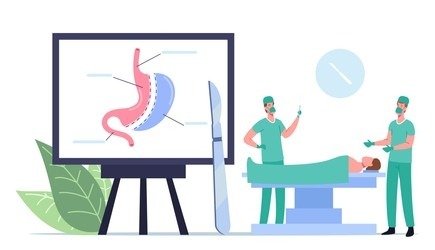John Doe
General SurgeonPretium saepe pariatur ornare cillum repudiandae inceptos iaculis cumque vulputate sequi neque quos exercitation aliquip interdum, veniam? Aute error, elit!

Pretium saepe pariatur ornare cillum repudiandae inceptos iaculis cumque vulputate sequi neque quos exercitation aliquip interdum, veniam? Aute error, elit!
Bariatric or weight loss surgeries are the best option to get rid of unwanted weight gain. Bariatric or weight loss surgeries make suitable changes in the digestive system of the individual that helps to lose weight in obese people.
Bariatric or weight loss surgeries(Other Gastrointestinal Surgeries) help to normalize your rate of metabolism as well as normal blood pressure level in the body, normal sugar level in the body, normal cholesterol level in the body. Bariatric or weight loss surgeries include gastric bypass, sleeve gastrectomy, gastric balloon, duodenal switch and gastric band therapies. These surgeries have proven results to treat last stage obesity in many individuals.
Bariatric or weight loss surgeries are usually performed when diet and exercises have not shown proven results to lose weight. These surgeries limit consumption of food as well as absorption of nutrients in the body that significantly helps to lose weight, although success of bariatric surgeries depends on the diet and exercises after the surgery.
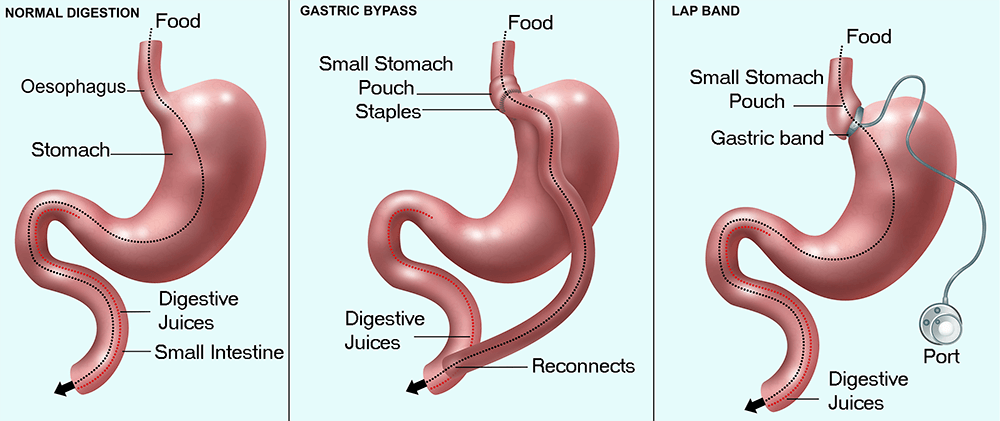
Bariatric surgery requirements begin with establishing a diagnosis of third stage obesity. These surgeries are recommended to the patient generally having a BMI of 35 or higher mostly in adults.
In cases where a patient is less than 18 years old then a pediatrician/endocrinologist certificate is explicitly required before going forward with bariatric surgery.
Screening by doctor before surgery.
Doctor provides proper guidance and screens each and every patient before recommending surgery to the patient. Doctors also inform patients about the risks, side effects, results and importance of post operative care before starting the procedure. This makes the patient aware about the consequences of the surgery and helps the patient to adapt to the changes in their body after surgery.
Doctor also verifies the BMI index of the patient before providing an option for surgery. The BMI range of obesity is 35 to 39.9 if an individual has severe health problems like sleep, apnea, Type ll diabetes, or other obesity related co- morbidities.
Weight loss surgeries are generally carried out with the laparoscopic technologies that use laparoscope for the insertion into the body, within the minor incisions that helps to capture internal high resolution images that helps doctors to recommend treatment options to the particular patient.
1. Gastric sleeve
Gastric sleeve surgery also called sleeve gastrectomy. This surgery is considered as the safest and least risk associated surgery, this surgery removes about 80% portion of the stomach leaving behind a small, tubular portion, like a sleeve. This surgery will eventually reduce the consumption of the food and will make you feel fuller faster. This reduces the rate of metabolism in the individual along with hunger hormones , decreasing your appetite and regulating normal blood pressure and blood sugar level in the body.
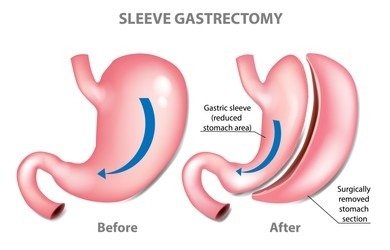
2. Gastric bypass
This surgery divides the stomach in a smaller upper pouch and lower pouch, and then connects the small intestine to the upper smaller pouch that results in a significant reduction in the amount of calories and nutrients taken up by the body that eventually decreases body weight. Through laparoscopic surgeries the stomach is divided into two parts in this surgery recovery time of this surgery is less.

3. Stomach intestinal pylorus sparing surgery
Gastric balloon is also referred to as swallow balloons in which a pill is swallowed inside the stomach. This pill inflates once it reaches the stomach last part. This procedure is carried out by placing a soft silicon balloon with an expandable balloon in the end part of the stomach ,rounding the upper part of the stomach. This balloon helps to feel full even after eating small meals. This balloon stays in the stomach for about 6 months and then gets excreted through the stool. This helps to lose weight on average of about 10-15 kg by limiting food intake and its utilization.
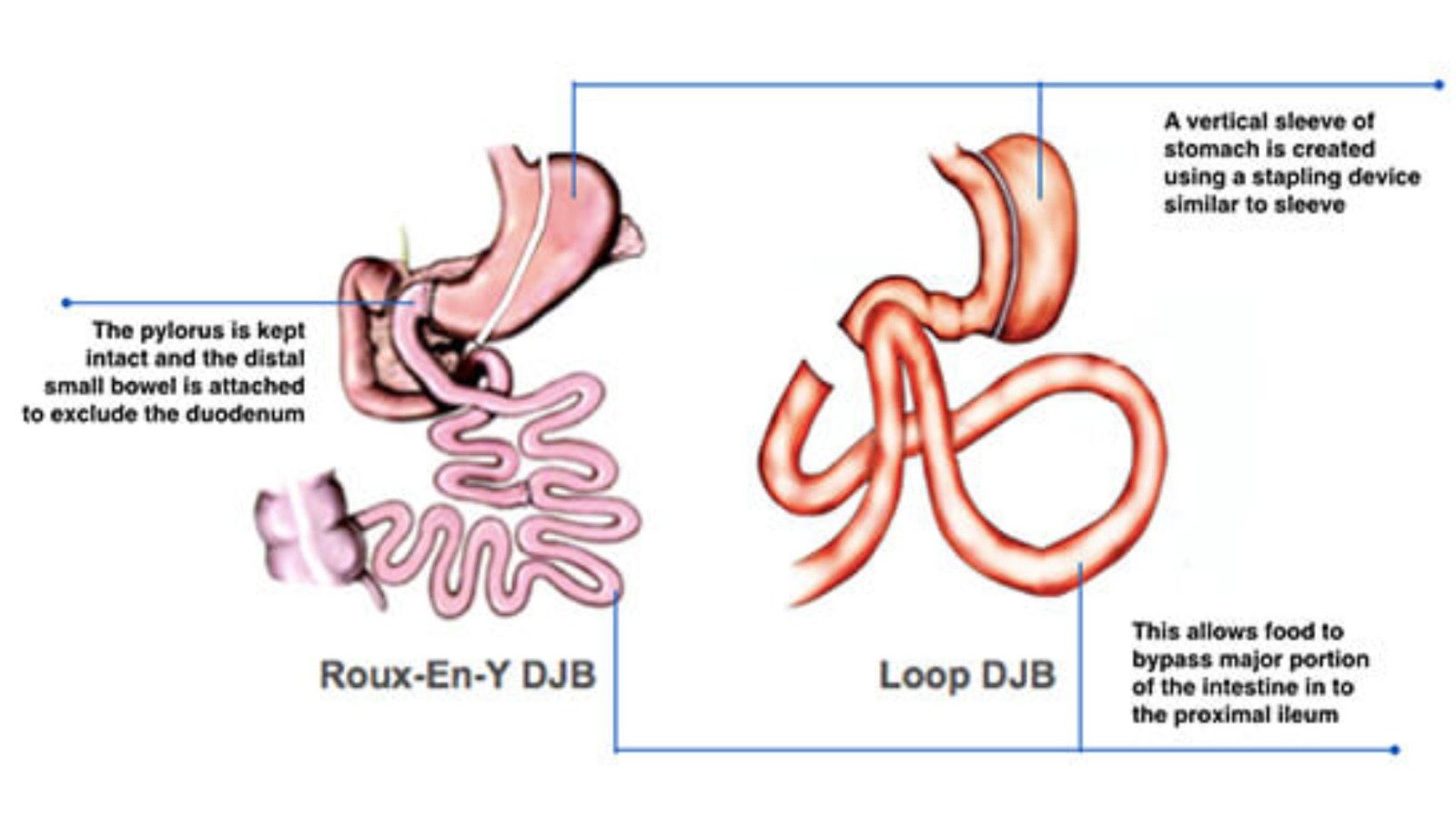
4. Gastric balloon
Gastric balloon is also referred to as swallow balloons in which a pill is swallowed inside the stomach. This pill inflates once it reaches the stomach last part. This procedure is carried out by placing a soft silicon balloon with an expandable balloon in the end part of the stomach ,rounding the upper part of the stomach. This balloon helps to feel full even after eating small meals. This balloon stays in the stomach for about 6 months and then gets excreted through the stool. This helps to lose weight on average of about 10-15 kg by limiting food intake and its utilization.
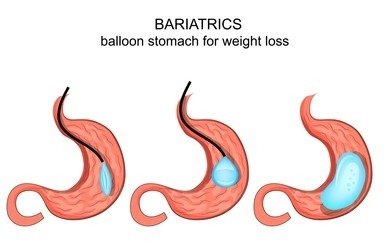
5. Gastric banding
It is the type of surgery in which the stomach is divided into 2 compartments with a much smaller top part above the band. A person who eats food feeds only the upper part of the stomach, after due course of time food slowly enters the small lower part of the stomach through the band, this process makes the digestion process continuous and normal.
